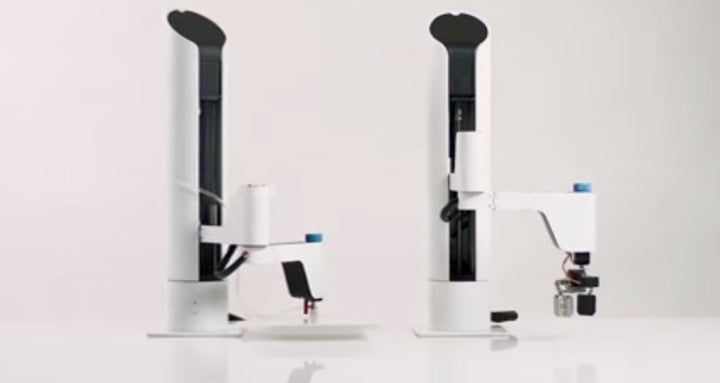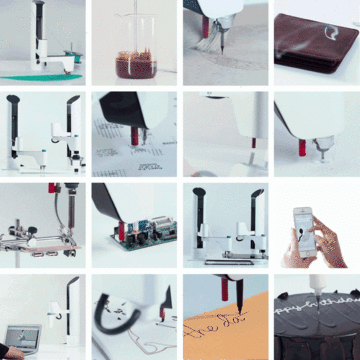
Welcome to our wired future, when we're still having trouble getting our printers to work. Some of the issues that people have in 2015, however, go beyond buggy software, bad drivers or misaligned paper. (Remember sprocket paper jams in dot matrix printers? No? LUCKY YOU!) Today, people are using 3D printers to create objects, not images or text, and with that ambition comes new problems -- from clogged printer heads to establishing a level printing surface, not to mention the cost of such an undertaking.
A new Kickstarter campaign is taking aim at many of these problems, offering a relatively affordable robotic arm that acts as a combination 3D printer, assembler, fabricator, laser cutter and painter. As of Tuesday afternoon, just a week into the campaign, the Makerarm project had attracted 136 backers and more than $140,000 of its $349,750 goal.
What got people excited? Makerarm co-founders Zaib Husain and Azam Shahani have built a working prototype that works in free space instead of printing out an object in an enclosure. With a reach measuring 15.7 inches long, 31.4 inches wide and 10 inches high, the arm can help users create and cut large 3D objects. It can be attached to any work bench and print or cut on surfaces that aren't level, something with which regular 3D printers struggle.
Makerarm also has interchangeable tool heads that can be swapped out for different functions, from cutting to printing frosting designs on cakes.

The idea for the all-in-one device was the result of frustration and the desire for something better.
"We've owned 3D printers and milling machines," Husain told The Huffington Post in an interview. "You name it, we've worked with it in the past. We were just not satisfied with the quality of work and the hassle of setup, the frustration about leveling the bed in the 3D printers. We ended up spending a lot of time fiddling with and fixing the machines, and not as much as time as we'd like working on the projects as we wanted."
The Makerarm isn't limited to working with just one type of material. Many consumer-grade 3D printers, like the popular MakerBot, melt plastic in a chamber before extruding it to create a final, layered object. Others work with resin instead of plastic, using an ultraviolet light to solidify resin layers into the intended shape. The Makerarm's creators, however, claim that their device will be the first machine capable of 3D-printing using either plastic or resin.
Backers of the new Kickstarter campaign will receive a Makerarm for $1,399 in October 2016, assuming the creators hit their goals. For the sake of comparison, MakerBot 3D printers range $1,375 for an entry level device to $6,499 for a top-of-the-line Replicator.
"The key part behind the project is to make iterative prototyping more affordable," said Husain. "In looking at this from an affordability point of view, as makers and part of a making community, we realized that a lot of people do not have access to the machines that we have, or even be able to afford a membership fee to a makerspace."
If you're unfamiliar with the concept, a "makerspace" refers to a learning environment where people can tinker and create DIY projects together.
So far, the Makerarm prototype is getting rave reviews in the industry. At the blog All About 3D Printing, Anatol Locker calls it a "dream machine." Michaal Molisch-Hou wrote at 3D Printing Industry that it's a better way to "fab the future."
Whether the Makerarm will become a "must-have device" for makerspaces in schools, libraries or garages in 2016 will depend on the production quality.
You can see the Makerarm in action in the video embedded below and judge for yourself.
